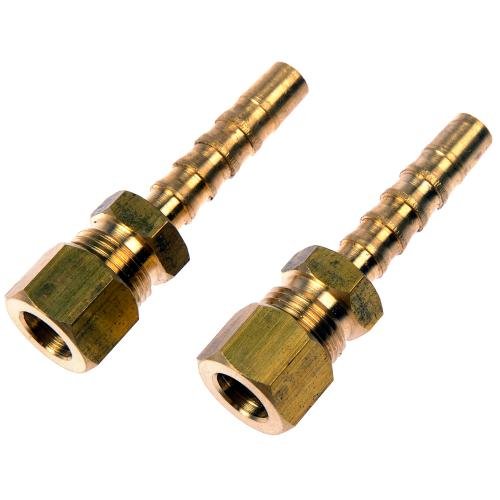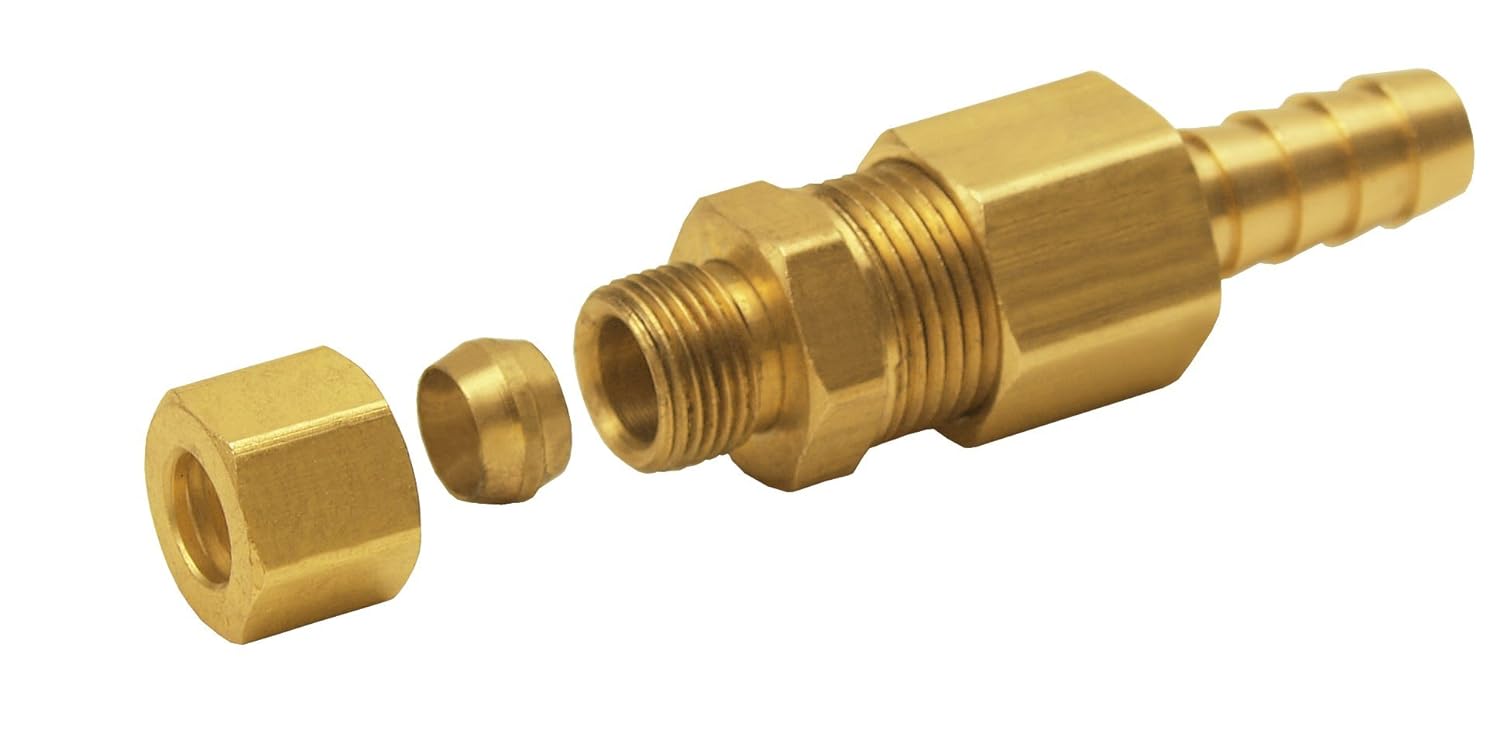Nice Pix. I guess there are arugments for physically mounting Aux coolers either before or behind the radiator. I am not seeing it being easy to mount mine behind radiator without makng relief cuts in the fan shroud.
The lines coming out my transmission are 5/16" diameter. The 5/16 inch steel brake line available at Napa Which i have no issues bending up to fit, is not quite the right length and the threaded coupler for transmission is not the right size, as it is a brake line. I have not unthreaded the steel cooler lines from TX, and am not sure of how they seal.
I am NOT going to do the salvage yard shuffle for this part/repair.
I am not paying any shop anything for this repair. so moving on...
I guess there are adapters and I buy long, cut the 5/16 steel brake line to length , flare it, hose clamp it. 60Inch 5/16" line is 11$.
Only one line is currently badly rusted and seeping, the other is 90% better with only minor surface rust, but ideally I would replace both. but Ideal likely is not going to happen.
Another option is cutting the rusty line a few inches from the TX output, where it is not rusty, using a 5/16" compression fitting with a 2 for 11$ barbed adapter for flex hose like this:
It says for 5/16 Nylon fuel hose, and i Assume.. that 5/16" ID transmission cooler hose will fit nice and snug on the barbs. This assumption thing....opinions?
I would also love to see the compression collett in the above pic, like on the pic below.
Note the local HD has nothing for 5/16 lines/hose so no cobbling these components together from any local source.
Here is a more expensive option, ~19$, for a single 5/16 compression fitting, but it only has 3/8 barbed fittings:
I am setting up a Derale remote transmission filter mount on passenger side frame which is close to radiator cooler output, and where I will set up the lines to Aux TX cooler( 3/8 barbed fittings), then back to the derale filter mount. The DErale mount 1/2 inch NPT as the output, and low and behold 1/2 inch NPT to 5/16 barbed is uncommon enough to be expensive and needs to be ordered. no free shipping and shppping is 50% the part price.
But I could use a 1/2NPT to 3/8" barbed and run flex line all the way back to the proposed 5/16 to 3/8 barbed compression coupler near transmission return port.
Some extra hose diameter on a section of plumbing shouldn't hurt. I'd rather have steel lines in the same position and shape and length as now, but there is this Derale 1/2 inch to 3/8" barbed output to consider.
I could use an Adapter like this
but that makes for yet two more connections/ failure points, I would prefer to avoid if possible.
My temporary fix is still not leaking ATF. I appear to have some time to sort this out, but the sooner the better.
When I open up system, I will be draining and dropping pan, changing in pan filter and gasket and ~ 5qts of ATF+4. The pan gasket and filter are a few days away from arriving.
So While flex 3/8 TX oil cooler hose running back to 5/16 transmission compression coupler from remote filter mount is not ideal as long as it is secured properly I am not seeing any red flags, unless it is really unhappy being 1/2 inch from Engine oil pan, and even then i could route it away from that.
But where I would add the 5/16 compression coupler to 3/8 ATF flex hose is only a few inches from the exhaust Y pipe. Unideal, but how risky would it be?
Perhaps a double 5/16" compression coupler and keep the flex hose farther away from Y pipe.
Questions.... The Existing TX fitting with 5/16 inch steel tubing......... not having opened it, and not going to until ready to start and finish project. Would it be possible to buy this 5/16 inch brake line at Napa, remove the provided threaded connectors, and slide the Current adapter upto the flared portion on the brake line?
2. Say this works, and i have replicated the bends and length of existing rusted steel lines. there is no flare at end of cut steel pipe. Sure flex hose can be slid over and clamped, but should end of this cut steel line be flared to make it more difficult for shose to be slid on/Off and hose clamped? I do not see the tools I have access to as being able to make a single barbed type of ridge to better secure flex hose. So flaring this new steel line slightly, just for a ridge for flex hose, acceptable, or unneeded?
I got a bunch of projects going on and a due by date where I will need to start putting some reliable mileage so am trying to plan the labor around when parts arrive, as I am replacing ignition compomnents as well as flushing cooling system anbd installing new t stat.
So I am stuck on whether to order the compression couplers and run flex hose in an unideal location, or perhaps get this brake line hose, cut it, slide off provided threaded connectors and hope I can use the 11/16 nut currently holding 5/16 line to TX can be reused on teh Napa brake line.
I have bent up new brake lines before, but only those of certain lengths that napa sells with the threaded connectors already on the line withing the flares.
Here is the current 5/16 steel line where it attached to my transmission:
Basically, can I count on being able to slide the Nut above, over Napa's 5/16" steel brake line and get a good seal?
i don;t want to open it up only to find out I cant, and have to switch course, after a proper cursing fit, tool throwing and $ expenditure and ATF everywhere.










